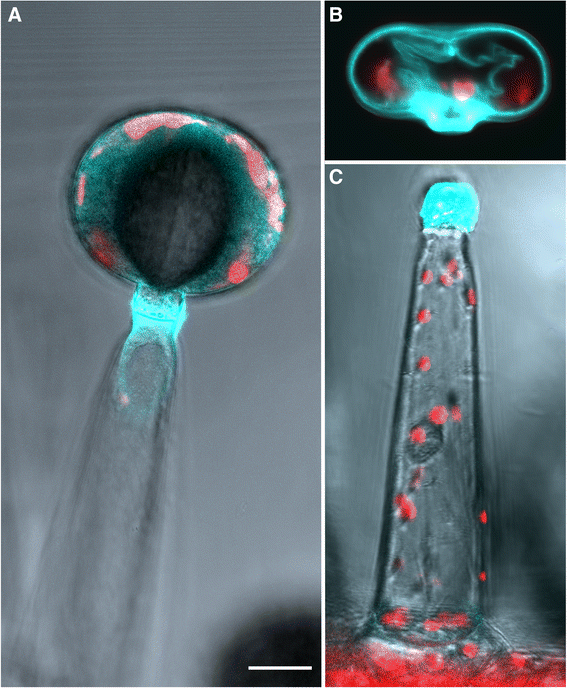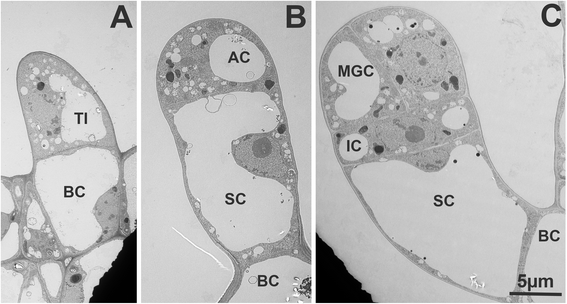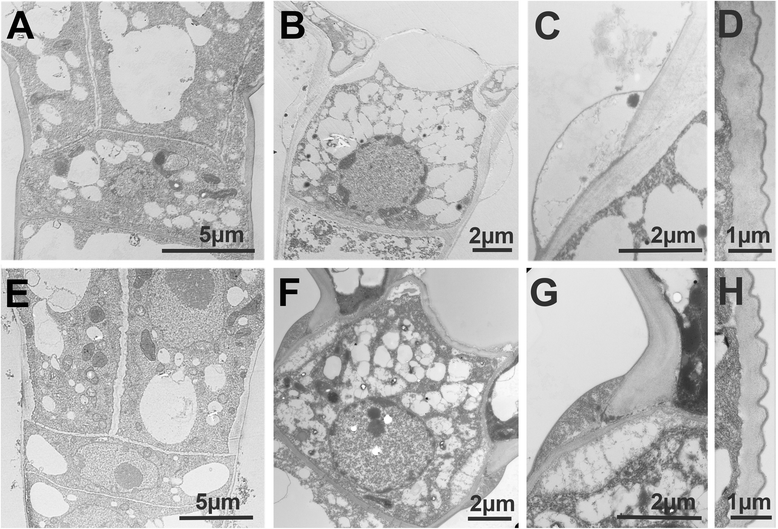The development of type VI glandular trichomes in the cultivated tomato Solanum lycopersicum and a related wild species S. habrochaites
- PMID: 26654876
- PMCID: PMC4676884
- DOI: 10.1186/s12870-015-0678-z
The development of type VI glandular trichomes in the cultivated tomato Solanum lycopersicum and a related wild species S. habrochaites
Abstract
Background: Type VI glandular trichomes represent the most abundant trichome type on leaves and stems of tomato plants and significantly contribute to herbivore resistance, particularly in the wild species. Despite this, their development has been poorly studied so far. The goal of this study is to fill this gap. Using a variety of cell imaging techniques, a detailed record of the anatomy and developmental stages of type VI trichomes in the cultivated tomato (Solanum lycopersicum) and in a related wild species (S. habrochaites) is provided.
Results: In both species, the development of these structures follows a highly reproducible cell division pattern. The two species differ in the shape of the trichome head which is round in S. habrochaites and like a four-leaf clover in S. lycopersicum, correlating with the presence of a large intercellular cavity in S. habrochaites where the produced metabolites accumulate. In both species, the junction between the intermediate cell and the four glandular cells constitute a breaking point facilitating the decapitation of the trichome and thereby the quick release of the metabolites. A strongly auto-fluorescent compound transiently accumulates in the early stages of development suggesting a potential role in the differentiation process. Finally, immuno-labelling with antibodies recognizing specific cell wall components indicate a key role of pectin and arabinogalactan components in the differentiation of type VI trichomes.
Conclusions: Our observations explain the adaptive morphologies of type VI trichomes for metabolite storage and release and provide a framework for further studies of these important metabolic cellular factories. This is required to better exploit their potential, in particular for the breeding of pest resistance in tomato.
Figures









References
-
- Payne W. A glossary of plant hair terminology. Brittonia. 1978;30(2):239–255. doi: 10.2307/2806659. - DOI
-
- Luckwill LC. The genus lycopersicon: a historical, biological, and taxonomic survey of the wild and cultivated tomatoes. Aberdeen: Aberdeen University Press; 1943.
Publication types
MeSH terms
Substances
LinkOut - more resources
Full Text Sources
Other Literature Sources
Miscellaneous

